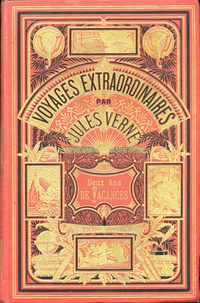

Here is a timeline of the production and release of Fritz Lang's Metropolis, in both Europe and the U.S. Notice that those dancing scenes got the film banned in Turkey.
Here is a detailed review linking Metropolis to the cyberpunk SF genre.
Here is a plot synopsis from IMDB:
The film is set in the year 2026, in the extraordinary Gothic skyscrapers of a corporate city-state, the Metropolis of the title. Society has been divided into two rigid groups: one of planners or thinkers, who live high above the earth in luxury, and another of workers who live underground toiling to sustain the lives of the privileged. The city is run by Johann 'Joh' Fredersen (Alfred Abel).
The beautiful and evangelical figure Maria (Brigitte Helm) takes up the cause of the workers. She advises the desperate workers not to start a revolution, and instead wait for the arrival of "The Mediator", who, she says, will unite the two halves of society. The son of Fredersen, Freder (Gustav Fröhlich), becomes infatuated with Maria, and follows her down into the working underworld. In the underworld, he experiences firsthand the toiling lifestyle of the workers, and observes the casual attitude of their employers (he is disgusted after seeing an explosion at the "M-Machine", when the employers bring in new workers to keep the machine running before taking care of the men wounded or killed in the accident). Shocked at the workers' living conditions, he joins her cause.
Meanwhile his father Fredersen consults with the scientist Rotwang (Rudolf Klein-Rogge), an old companion and rival. Fredersen learns that the papers found with dead workers are plans of the catacombs and witnesses a speech by Maria. He also learns that Rotwang has built a robotic gynoid. Rotwang wants to give the robot the appearance of Hel, his former lover who left him for Fredersen and died giving birth to Freder. Fredersen persuades him to give the robot Maria's appearance, as he wants to use the robot to tighten his control over the workers. Rotwang complies out of ulterior motives: he knows of Freder's and Maria's love and wants to use the robot to deprive Fredersen of his son.
The real Maria is imprisoned in Rotwang's house in Metropolis, while the robot Maria is first showcast as an exotic dancer in the upper city's Yoshiwara nightclub, fomenting discord among the rich young men of Metropolis. After descending to the worker's city, the robot Maria encourages the workers into a full-scale rebellion, and they destroy the "Heart Machine", the power station of the city. Neither Freder nor Grot, the foreman of the Heart Machine, can stop them. As the machine is destroyed, the city's reservoirs overflow, flooding the workers' underground city and seemingly drowning the children, who were left behind in the riot. In fact, Freder and Maria have saved them in a heroic rescue, without the workers' knowledge.
When the workers realize the damage they have done and that their children are lost, they attack the upper city. Under the leadership of Grot, they chase the human Maria, whom they hold responsible for their riot. As they break into the city's entertainment district, they run into the Yoshiwara crowd and capture the robot Maria, while the human Maria manages to escape. The workers burn the captured Maria at the stake; Freder, believing this to be the human Maria, despairs but then he and the workers realize that the burned Maria is in fact a robot.
Meanwhile, the human Maria is chased by Rotwang along the battlements of the city's cathedral. Freder chases after Rotwang, resulting in a climactic scene in which Joh Fredersen watches in terror as his son struggles with Rotwang on the cathedral's roof. Rotwang falls to his death, and Maria and Freder return to the street, where Freder unites Fredersen and Grot, fulfilling his role as the "Mediator".














